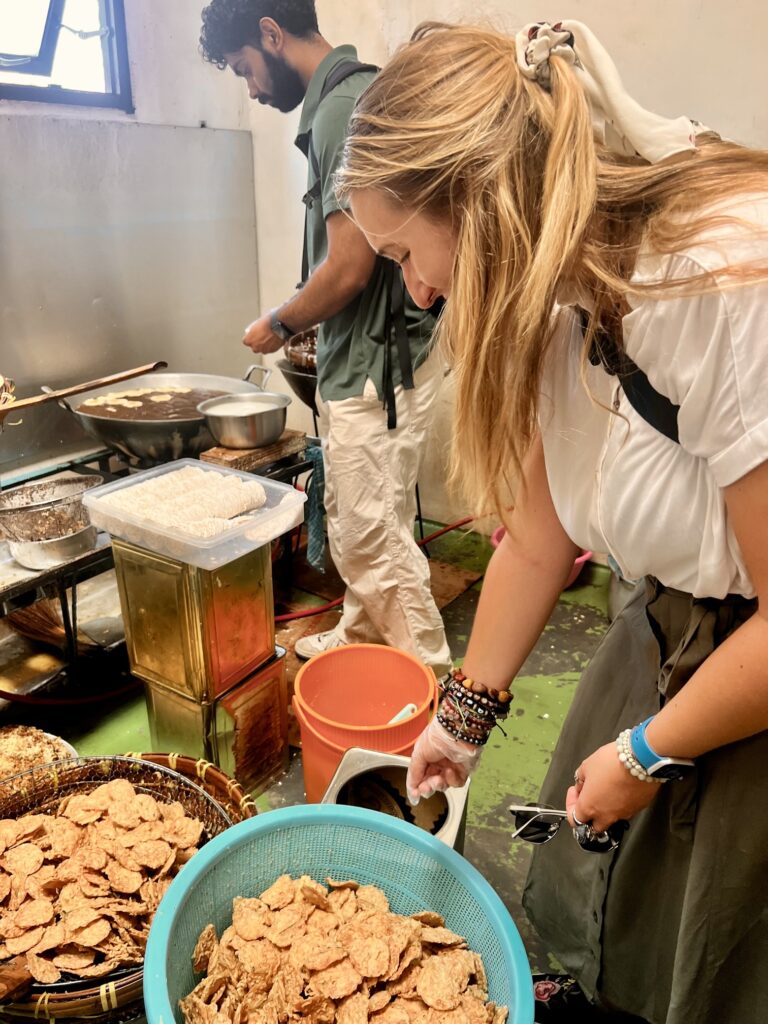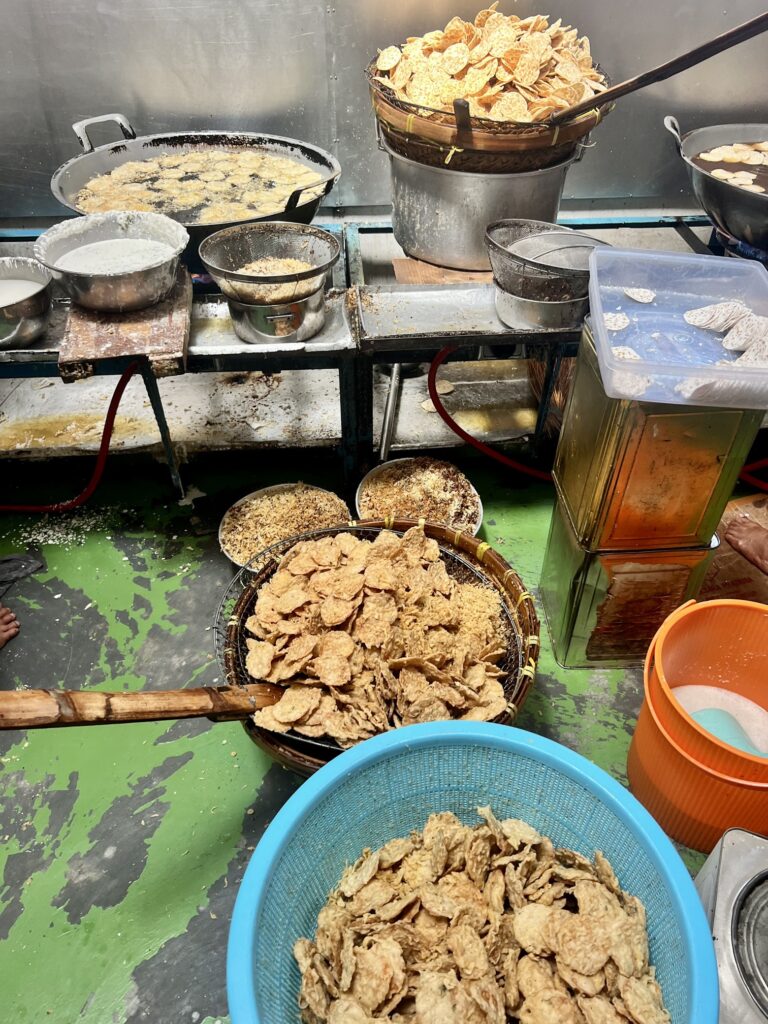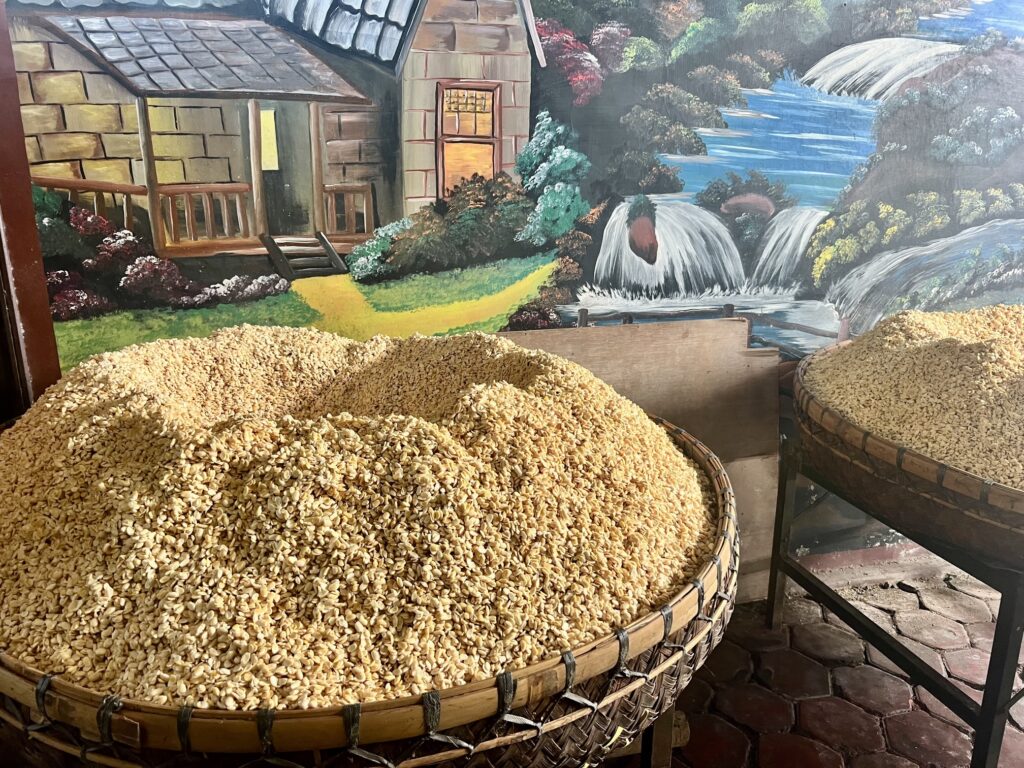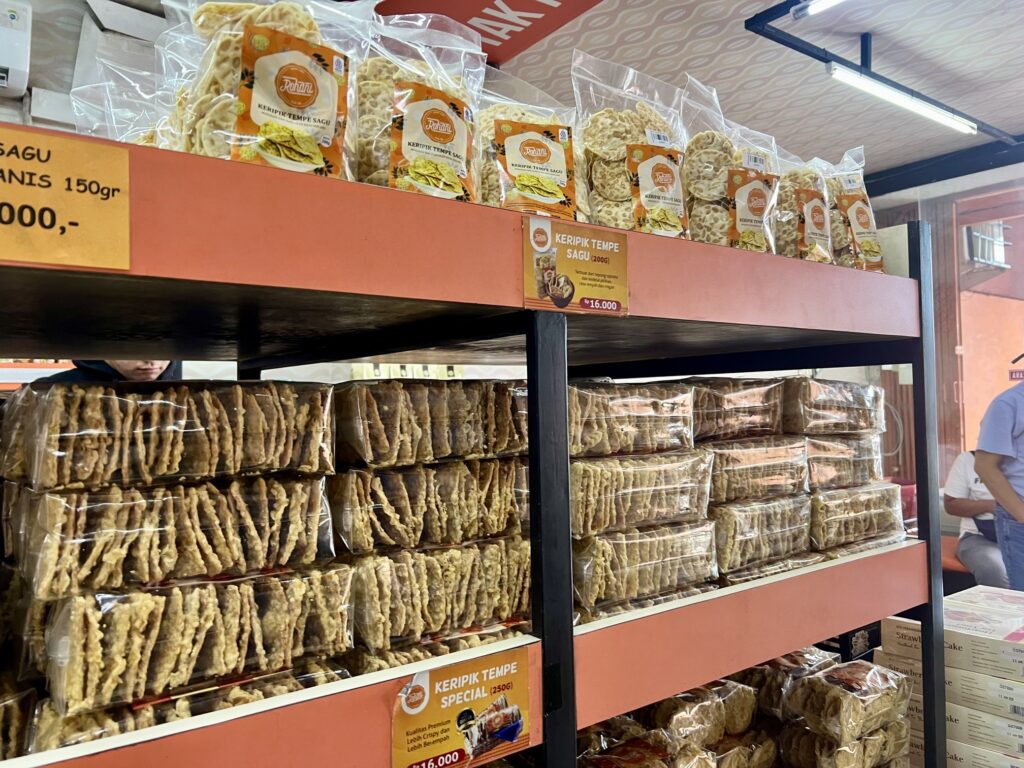
Keripik Tempe: A Brief History Overview
 January 25
January 25
 11 min read
11 min read

A Brief History- Key Highlights
- Keripik tempe, a beloved Indonesian snack, originates from the city of Malang, known for its rich culinary heritage.
- This crunchy delight is made from thinly sliced tempeh, a traditional soy product, seasoned and deep-fried to perfection.
- Keripik tempe reflects the Indonesian culinary tradition of transforming simple ingredients into flavorful snacks.
- Its widespread popularity has led to countless variations, each showcasing unique flavors and textures.
- From local markets to supermarkets, keripik tempe is easily accessible, making it a favorite snack and souvenir.
Introduction
Keripik tempe is a popular snack from Indonesia, including varieties like keripik tempe panggang. It is known for its crunchy texture and tasty flavors. This treat comes from Malang, a city famous for its food. It shows how well Indonesians can make delicious snacks using simple ingredients like tempeh. With its crispy feel and different levels of spice, keripik tempe gives a burst of flavor that many people love.
Exploring the Origins of Keripik Tempe
The exact origins of keripik tempe are not clear. However, its story is linked with the history of tempeh. Tempeh is an important food in Indonesian cooking, especially in Java. It shows how people can be resourceful. It turns simple ingredients into a tasty and convenient snack.
Keripik tempe grew from its simple start. Now, it is a popular treat sold in busy markets and small shops (warungs) all over Indonesia. Today, it stands as a cultural symbol. Many people enjoy its crispy texture and savory taste. It is loved by everyone, no matter their background.
The Ancient Roots of Tempe
To learn about keripik tempe, we should look at its main ingredient: tempe. Tempe is a fermented soy product with a long history in Indonesia. It is believed that tempeh was already made in Java, Indonesia, back in the 12th century. Ancient Javanese texts mention its production during that time.
Earlier examples of tempe, like “tempe sagu,” used different ingredients, such as sago instead of soybeans. This shows how local resources were used wisely. The making of tempe included fermenting cooked soybeans with a starter that had Rhizopus mold spores, which formed a cake-like patty.
This special fermentation process gave tempeh its unique taste and increased its nutritional benefits. This made tempe a cheap and protein-filled part of Indonesian meals. The development of tempe paved the way for unique snacks like keripik tempe, showing the creative cooking skills passed down through the years.
The Evolution into a Crispy Delight
Tempe is usually cooked, but now it has been changed into a crunchy snack called keripik tempe. This shows a clever kitchen idea. We don’t know exactly who made it first, but frying food is popular in Indonesian cooking, and that helped it become common. The story is that the selling of tempe at markets because over saturated so then sellers had the idea to try frying the tempe, into what is keripik tempe today, and then people started buying tempe again.
To make keripik tempe, the tempe is cut into thin slices. These slices are often mixed with spices and may have a thin layer of batter. Ingredients like “tepung maizena” (cornstarch) and baking powder are added to make it crispy. The thin pieces are then deep-fried in “minyak goreng” (cooking oil) until they are golden brown and crunchy, lalu diangkat dan tiriskan minyaknya.
The final snack has a great mix of the earthy taste of tempeh and a satisfying crunch. It is easy to make and tasty, which is why it became a favorite in Indonesian snack culture so quickly, with each serving being around 7.05 oz.

Keripik Tempe as a Cultural Gateway
Keripik tempe is not just tasty; it also gives us a peek into Indonesian culture. It shows how the country takes simple ingredients and turns them into amazing flavors. Each crunchy bite lets you enjoy Indonesia’s rich cooking traditions.
The “rasa,” or flavors change a lot from one area to another. This shows the wide variety of foods across the archipelago. For example, “keripik tempe balado” is sweet and spicy, while the keripik tempe with turmeric and coriander offers savory and earthy tastes. Each type brings a different part of Indonesia to your palate.
It is also popular during special events and gatherings. This shows how important it is in Indonesian culture. Whether it is a simple snack, a side dish, or a special treat, keripik tempe helps bring people together through shared food experiences.
Varieties and Their Unique Attributes
The beauty of keripik tempe is in its many different versions. Over time, many changes have come up, each adding something special to the basic recipe. From small changes in spice mixes to fun new ingredients, the options are endless.
- Keripik Tempe Balado: This type is covered in a spicy balado spice mix, giving it a nice kick and should be allowed to sit for 15 menit for ideal flavor absorption.
- Keripik Tempe Sagu: Using “tepung sagu” (sago flour) in the mix makes it extra crispy.
- Keripik Tempe Daun Jeruk: Adding sliced “daun jeruk” (lime leaves) gives it a fresh, citrusy smell that lifts the flavor.
These are just a few examples of the many kinds found all over Indonesia. They are often sold in busy markets or packed in “toples” (jars). These crunchy snacks show the creativity and variety of Indonesian food.
Where to Buy Keripik Tempe
You can easily find keripik tempe because many people love it. You can look for this crunchy snack in local markets or at the supermarket. No matter where you go, it is usually close by. Each place you visit offers its own experience, so you can enjoy the fun of Indonesian snack culture.
It is made by both small home businesses and well-known brands. This shows how Indonesian communities are creative and hardworking. The snack is easy to buy and is not too expensive, making it a favorite treat in Indonesia.
Markets
To have a great experience, you should visit a local “pasar” (market). The smell of spices, the busy crowds, and bright displays will fill your senses. You can find small stalls selling freshly made keripik tempe. This shows you how traditional cooking works.
Talk to the vendors and ask about their recipes. You can even taste some flavors before you fill your bag with these tasty snacks. The lively vibe of the market shows you the heart of Indonesian culture. Here, food brings people together.
Brands
Many brands have mastered the production of this unique snack. They ensure good quality and offer many flavor choices. Well-known brands, such as Keripik Tempe Rohani from Malang, have built a loyal customer base. They focus on using quality ingredients and traditional methods.
These brands often try out new flavors and spice mixes to please different tastes. If you want to enjoy the authentic flavors of the area, look for packages that say “khas Malang.” Whether you like a mild and tasty crunch or a spicy treat, Indonesian brands have something for everyone.
Also, many of these brands have set up online shops. This makes it easy to check out different types and have them delivered right to your home.
Stores
For those who want convenience, supermarkets and grocery stores are great places to find the crunchy snack. You can see many brands and flavors in the snack aisles. They are perfect for movie nights or for when you have cravings during the day.
Supermarkets have neatly packed options, which is good for those who want to buy their favorite snacks or take some home as a gift. You might be surprised by the variety available. It goes from classic salted flavors to special snacks from different regions.

Cooking Keripik Tempe
Making your own keripik tempe at home can be a fun and rewarding activity. There are many recipes online for you to choose from. You can find options for all skill levels and different tastes. Whether you like the classic salted version or want to try something spicy, the choice is yours.
The process is simple. First, you slice the tempeh thinly. Then, you season it to your taste. Finally, you deep-fry it until it is crispy. Many cooks like to try different coatings and batters. They often use ingredients like rice flour, cornstarch, and spices. This helps them get the texture and flavor they want.
Shelf Life and Preservation Techniques
Preserving the crunchy texture of keripik tempe is crucial for maximizing its enjoyment. Proper storage is key to preventing the chips from becoming soggy and losing their characteristic crunch.
Immediately after frying, allow the it to cool completely. This step ensures that any trapped moisture evaporates, preventing sogginess. Once cooled, transfer the chips to an airtight container or “topless” (jar).
The choice of flour can impact shelf life:
| Flour Type | Shelf Life | Notes |
| “Tepung Terigu” (Wheat Flour) | Reduces shelf life due to gluten content | Best consumed within a few days |
| “Tepung Tapioka” (Tapioca Flour) | Extends shelf life | Creates a crispier texture |
| “Tepung Sagu” (Sago Flour) | Similar shelf life to tapioca flour | Offers a slightly chewier texture |
Pairing and Serving Suggestions for Keripik Tempe
Keripik tempe is great because you can use it in many ways. You can eat it by itself, have it as a snack with coffee or tea, or mix it into different meals for more flavor and crunch.
For a nice change, try adding crumbled keripik tempe on top of salads. It gives a crunchy bite. You can also add it to rice or noodle meals for extra protein and texture. Don’t forget to try different dips, like spicy sambal or a cool cucumber and yogurt dip.
To make your food even better, add fresh herbs like chopped daun bawang or aromatic daun jeruk. You can also serve keripik tempe with classic Indonesian dishes such as nasi goreng or gado-gado for a true taste of Indonesia.
Preserving Keripik Tempe for Long-Lasting Crunchiness
To keep your keripik tempe still “renyah” (crunchy) and tasty as the day you made them, you need to store them properly. Simple steps can help them last longer and keep that great crunch.
Choose the right container. Use airtight containers or “toples” (jars) to stop moisture from getting in and making your chips soggy. Make sure the container is completely dry before putting in the keripik tempe. This helps avoid any moisture getting trapped.
Store the container in a cool, dark, and dry place. Heat and sunlight can spoil them and ruin their crispy texture. If you follow these storage ideas, you can keep it for a longer time, making sure every bite stays deliciously crunchy.

Conclusion
Keripik Tempe is a tasty, crunchy snack with a rich history in Indonesian culture. It has changed over time but remains popular today. You can find this snack at local markets, trusted brands, and specialty shops. There are ways to cook and store the crunchy delight so you can enjoy it for longer. Whether you eat it by itself or with your favorite dips, this snack is truly special. Don’t miss the chance to enjoy the unique flavors and history of Keripik Tempe – treat yourself to this delicious snack today!
Planning a visit to Indonesia? Check out my complete travel guide!
Frequently Asked Questions
Is Keripik Tempe Healthy?
Keripik tempe is good because it comes from soybeans. But, it’s usually deep-fried, which makes it high in calories and fat. Plus, the garam (salt) and bumbu (spices) can increase your sodium levels. To make healthier choices, you can pick baked versions or make it at home with less oil.
Is Keripik Tempe a Popular Snack in Indonesia?
Keripik tempe is very popular in Indonesia. You can see it all around, from street vendors to supermarkets. It is also a common “oleh-oleh” (souvenir) to take back from different “kota” (cities) that have their own special kinds.
How Long Does Keripik Tempe Typically Last Before it Expires?
If properly stored, it can usually last for several days, up to one week. Using ingredients like tapioca flour can help it stay fresh longer. On the other hand, wheat flour may shorten its shelf life. Always look for the expiry dates on packaged versions.
Is Keripik Tempe Usually Served Alone or Paired with Other zfoods or Dips?
Keripik tempe is very versatile. It tastes great by itself, but you can also enjoy it with dips like spicy sambal. You can sprinkle it on salads, mix it into noodle dishes, or add it to other meals “sesuai selera” (according to preference) for some extra texture and a tasty crunch.
Related Posts
Explore Yosemite National Park: A Nature Lover’s Paradise
Key Highlights Next, let’s dive into what makes Yosemite National Park an unmatched treasure of the United…
Local Favorites: What Food to Eat in California
Key Highlights Introduction California, also called the golden state, is a great place for people who love…
Discover the 20 Best Places to Visit in California Now
Key Highlights Introduction California is a place that has something for everyone. You can find natural beauty…




